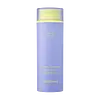What's inside
What's inside
 Key Ingredients
Key Ingredients

 Benefits
Benefits

 Concerns
Concerns

 Ingredients Side-by-side
Ingredients Side-by-side

Water
Skin ConditioningPropylheptyl Caprylate
EmollientTromethamine
BufferingC12-15 Alkyl Benzoate
AntimicrobialUrea
BufferingGlycolic Acid
BufferingLactic Acid
BufferingNiacinamide
SmoothingDipropylene Glycol
HumectantCetearyl Alcohol
EmollientGlyceryl Stearate
EmollientPEG-100 Stearate
1,2-Hexanediol
Skin ConditioningCetearyl Glucoside
EmulsifyingSodium Polyacryloyldimethyl Taurate
Emulsion StabilisingCaprylic/Capric Triglyceride
MaskingGlycerin
HumectantCaprylyl Glycol
EmollientPolyacrylamide
Salicylic Acid
MaskingSphingomonas Ferment Extract
Skin ConditioningC13-14 Isoparaffin
EmollientDisodium EDTA
Bakuchiol
AntimicrobialEthylhexylglycerin
Skin ConditioningXanthan Gum
EmulsifyingAdenosine
Skin ConditioningLaureth-7
EmulsifyingRetinal
Skin ConditioningBeta-Glucan
Skin ConditioningTocopherol
AntioxidantWater, Propylheptyl Caprylate, Tromethamine, C12-15 Alkyl Benzoate, Urea, Glycolic Acid, Lactic Acid, Niacinamide, Dipropylene Glycol, Cetearyl Alcohol, Glyceryl Stearate, PEG-100 Stearate, 1,2-Hexanediol, Cetearyl Glucoside, Sodium Polyacryloyldimethyl Taurate, Caprylic/Capric Triglyceride, Glycerin, Caprylyl Glycol, Polyacrylamide, Salicylic Acid, Sphingomonas Ferment Extract, C13-14 Isoparaffin, Disodium EDTA, Bakuchiol, Ethylhexylglycerin, Xanthan Gum, Adenosine, Laureth-7, Retinal, Beta-Glucan, Tocopherol
Water
Skin ConditioningIsopropyl Palmitate
EmollientCarthamus Tinctorius Seed Oil
MaskingGlycerin
HumectantCetyl Alcohol
EmollientDimethicone
EmollientCetearyl Olivate
Butyrospermum Parkii Butter
Skin ConditioningSorbitan Olivate
EmulsifyingTridecyl Stearate
EmollientNeopentyl Glycol Dicaprylate/Dicaprate
EmollientAllantoin
Skin ConditioningRetinol
Skin ConditioningCellulose Acetate Butyrate
Linoleic Acid
CleansingPhospholipids
Skin ConditioningPhytosterols
Skin ConditioningSodium Hyaluronate
HumectantXanthan Gum
EmulsifyingTridecyl Trimellitate
EmollientCaprylic/Capric Triglyceride
MaskingTetrasodium Glutamate Diacetate
Tricaprylin
MaskingSodium PCA
HumectantPentaerythrityl Tetra-Di-T-Butyl Hydroxyhydrocinnamate
AntioxidantSilica Silylate
EmollientSilica
AbrasiveMagnesium Stearate
Cosmetic ColorantSodium Hydroxide
BufferingSodium Benzoate
MaskingCitric Acid
BufferingEthylhexylglycerin
Skin ConditioningPhenoxyethanol
PreservativeWater, Isopropyl Palmitate, Carthamus Tinctorius Seed Oil, Glycerin, Cetyl Alcohol, Dimethicone, Cetearyl Olivate, Butyrospermum Parkii Butter, Sorbitan Olivate, Tridecyl Stearate, Neopentyl Glycol Dicaprylate/Dicaprate, Allantoin, Retinol, Cellulose Acetate Butyrate, Linoleic Acid, Phospholipids, Phytosterols, Sodium Hyaluronate, Xanthan Gum, Tridecyl Trimellitate, Caprylic/Capric Triglyceride, Tetrasodium Glutamate Diacetate, Tricaprylin, Sodium PCA, Pentaerythrityl Tetra-Di-T-Butyl Hydroxyhydrocinnamate, Silica Silylate, Silica, Magnesium Stearate, Sodium Hydroxide, Sodium Benzoate, Citric Acid, Ethylhexylglycerin, Phenoxyethanol
 Reviews
Reviews

Ingredients Explained
These ingredients are found in both products.
Ingredients higher up in an ingredient list are typically present in a larger amount.
This ingredient is an emollient, solvent, and texture enhancer. It is considered a skin-softener by helping the skin prevent moisture loss.
It helps thicken a product's formula and makes it easier to spread by dissolving clumping compounds.
Caprylic Triglyceride is made by combining glycerin with coconut oil, forming a clear liquid.
While there is an assumption Caprylic Triglyceride can clog pores due to it being derived from coconut oil, there is no research supporting this.
Learn more about Caprylic/Capric TriglycerideEthylhexylglycerin (we can't pronounce this either) is commonly used as a preservative and skin softener. It is derived from glyceryl.
You might see Ethylhexylglycerin often paired with other preservatives such as phenoxyethanol. Ethylhexylglycerin has been found to increase the effectiveness of these other preservatives.
Glycerin is already naturally found in your skin. It helps moisturize and protect your skin.
A study from 2016 found glycerin to be more effective as a humectant than AHAs and hyaluronic acid.
As a humectant, it helps the skin stay hydrated by pulling moisture to your skin. The low molecular weight of glycerin allows it to pull moisture into the deeper layers of your skin.
Hydrated skin improves your skin barrier; Your skin barrier helps protect against irritants and bacteria.
Glycerin has also been found to have antimicrobial and antiviral properties. Due to these properties, glycerin is often used in wound and burn treatments.
In cosmetics, glycerin is usually derived from plants such as soybean or palm. However, it can also be sourced from animals, such as tallow or animal fat.
This ingredient is organic, colorless, odorless, and non-toxic.
Glycerin is the name for this ingredient in American English. British English uses Glycerol/Glycerine.
Learn more about GlycerinWater. It's the most common cosmetic ingredient of all. You'll usually see it at the top of ingredient lists, meaning that it makes up the largest part of the product.
So why is it so popular? Water most often acts as a solvent - this means that it helps dissolve other ingredients into the formulation.
You'll also recognize water as that liquid we all need to stay alive. If you see this, drink a glass of water. Stay hydrated!
Learn more about WaterXanthan gum is used as a stabilizer and thickener within cosmetic products. It helps give products a sticky, thick feeling - preventing them from being too runny.
On the technical side of things, xanthan gum is a polysaccharide - a combination consisting of multiple sugar molecules bonded together.
Xanthan gum is a pretty common and great ingredient. It is a natural, non-toxic, non-irritating ingredient that is also commonly used in food products.
Learn more about Xanthan Gum